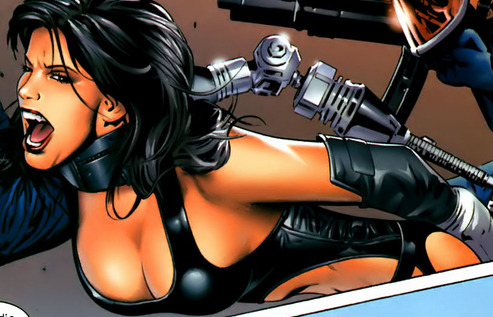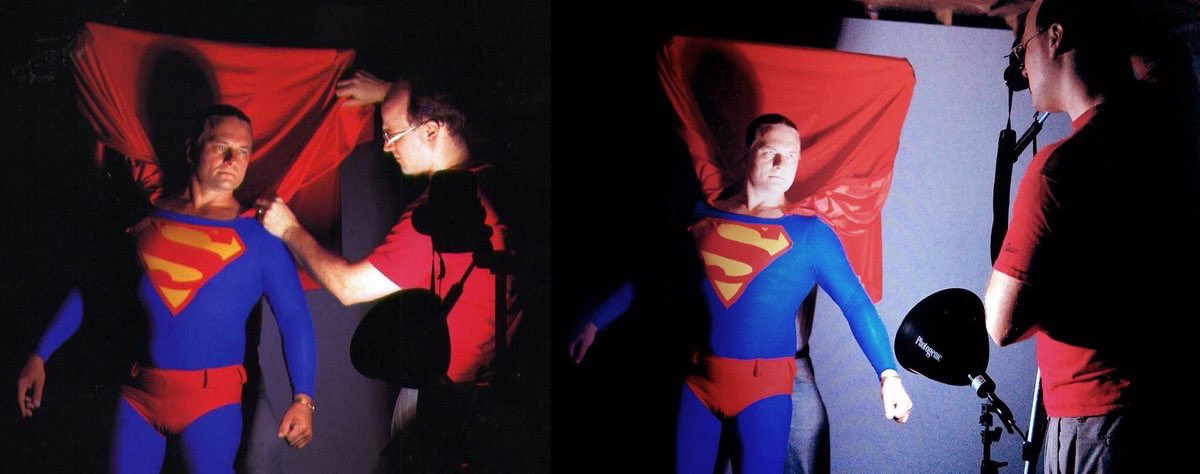by Matthew Russell - Posted 5 years ago
Privet my Vigilante Comrades. How are you today? I wanted to reach out to you about a small issue that I see popping up a lot in comics lately; photographic references. Today we will look into the legal issues surrounding this as well as when and where it works.
Photographic References are great if you want to get a photorealistic image for your comic. As a penciler, I relied heavily on this technique when I was first attempting to master the craft. I was looking for my own style.
There is a time and place for it though. Artists like Greg Land have found themselves in some pretty hot water for it.
Let me start out with my personal opinion, Greg Land is an amazing artist. His linework is top-notch and he can layout a comic with his amazing eye for detail. He is able to land regular work on top-rated comics such as X-Men and many others. He has a reputation for producing on time, which, many of you might not realize, is a HUGE accomplishment.
With that out of the way, let’s look at his process.
His first work was from Storm Quest Issue #1, a title from a smaller publishing company called Caliber Press. His art was obviously inspired by the legendary Jim Lee. On his first cover, he literally copies a character.

On the StormWatch drawn by Jim Lee, take a look at Diva in the top left and compare it to Shalimar also in the top left of Storm Quest. This is known as “Swiping” and it is basically the worst thing you can do for the reputation of an artist.
Now when is Swiping ok?
As I have said in the intro, I have done this when I am trying to figure out my own style. I originally started to do this with artists such as Gram Nolan’s Bane in order to figure out how to draw. Below is my rendition of Bane swiped directly from the pages of Detective Comics. As I have said, I was in a High School art class and had no intention of publishing it.

As you can see, I was trying to learn about perspective and how it influenced dynamic shots. I wanted to be this good someday. Also, it was a bad @$$ picture and I wanted to draw it. By the way, I got an A on this assignment.
Now back to Greg Land.
Throughout his career, he had a great run on titles like X-Men, New Titans, Birds of Prey and Nightwing. He started to develop his own style with the occasional swiping from McDaniel’s Nightwing run as well as the Killing joke.
As “bad” as this is, it would be forgivable, if it ended there. It didn’t.
He went to work for Crossgen Comics. This was a revolution in the comics that was amazing. Instead of working on a per-page basis, artists and writers were paid on a salary basis that included things like health insurance and other benefits. He was assigned to the new title Sojourn.

It was at this time that he developed a photo-realistic style (our main topic for today). The problem was that, although the art improved as far as composition, the subjects became stiff. The reason for this...the internet.
He would take pictures of models from sports illustrated and other magazines and copy them. He morphed the models into his characters.
Just look at the cover of Sojourn Issue #22 side by side with Sports Illustrated “Red Hot” cover. I flipped the Sports Illustrated cover so you can see how it is a direct copy.

He became reliant on images from Pro Wrestling, paused movie moments, Pamala Anderson pictures, and porn...yep, porn.


People started to notice that almost every expression on the female characters’ faces was that of ecstasy and not the intended surprise, shock, or anger.

Other times, he would take popular memes and use them for a comic reference. Here is one with a man holding his chest. It wouldn’t be that bad but Iron-Man has a helmet on. WTF is going on here!?!

Now, I have used a lot of images from Brett Booth’s art as a template to design a new comic character.
I start by using the template form “Comics For Beginners” I’ve printed hundreds of these templates to help design a new character.
Once I have a design that I like I will draw it real quick using a Brett Booth full-page image. This, I keep for myself. I use his art as a reference so I can see what the character will look like in action and show off the uniform or costume that they are wearing. Often times, I will strike this and start again thinking that the costume is too overly complicated.
I do not publish this, this is for my own personal use. It helps me stay hopeful for the character. It’s just something I do to help me feel connected with the character.
Now, there are an artist that use photo-realism in a great way. He is a true genius and a talent unto himself. I cannot praise him enough. His work is purely brilliant. If you can’t tell, I’m a fan.

He would maliciously set up a photoshoot with friends and family dressed in costumes of his subjects. After this, he would take the photos and paint using them as references for each panel.

I first became aware of this when I purchased his Kingdom Come in trade paperback. I had every issue but I didn’t want to damage them so I never read them, I just waited until it came out as a trade.
I was blown away by his work and storytelling. He walked everyone through his process of getting the script, assigning the models, and designing the layout before ever picking up his paintbrush.

If you just go to Google and pick a picture intending to draw it for inclusion in a comic, this is illegal. Either the copyright is owned by the magazine or movie production company or the photographer themselves.
By copying this, you are committing a crime punishable by $200-$150,000.00 fines. Don’t do this, it isn’t worth it.
If you are just learning to draw, go for it. For hair, I recommend Revlon ads. They put a lot of money into making hair look good. If you’re wanting to learn to draw fur, National Geographic all the way. Human emotion, again, National Geographic. Power poses, Forbes.
Alex Ross had it right. If you want to draw a photorealistic comic take the pictures yourself. This way, you own the copyright to the images. If you want to use someone else’s photo, ask them. If they are a professional photographer, they might ask for a small amount of royalties. Either way, it will be far less than the royalties and court fees.
Get your comic done and get it into the marketplace so you can share it with the world. I hope to see your work in CryptoComics soon!